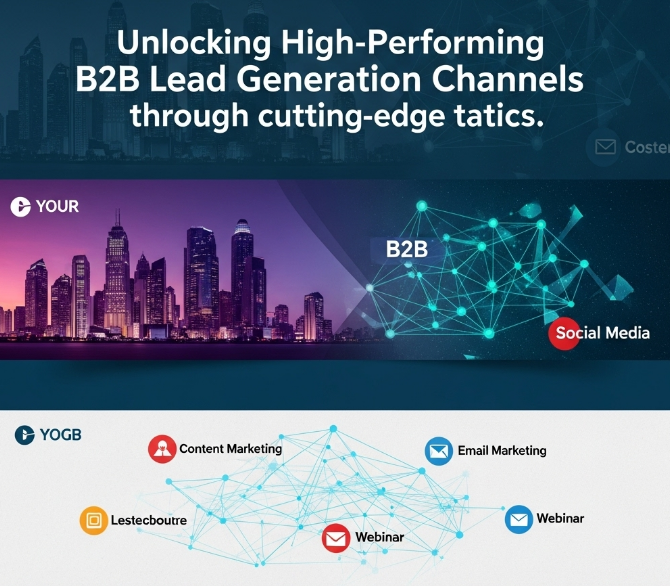Every business needs new customers to grow. For companies that sell to other businesses, this means finding B2B leads. B2B stands for “business to business.” So, you are looking for other companies that might buy your products or services. But where do you find these companies? This is where lead generation channels come in. These are the different paths or methods you use to find potential business clients. Knowing the best channels helps you focus your efforts. It helps you get more sales.
What Are B2B Lead Generation Channels?
B2B lead generation channels are the ways a business finds and attracts potential clients. These are not just any customers. They are other businesses. Imagine you sell special software for big factories. Your channels would be where those factory managers spend their time. These channels can be online or offline. They are places where you can connect with your target audience. The goal is to get their interest. Then, you turn that interest into a sales opportunity.
Why Channels are Important
Choosing the right channels is very important. Not all channels work for every business. If you use the wrong list to data channel, you waste time and money. The right channel helps you reach the right people. It helps you get quality leads. Quality leads are more likely to buy. They also make your sales team more efficient. So, picking smart channels is key to success. It helps your marketing dollars go further. Therefore, a good strategy is vital.
Different Types of Channels
There are many different types of channels. Some are online, like social media or websites. Others are offline, like events or phone calls. Some channels are about attracting people (inbound). Others are about reaching out to them (outbound). A good lead generation plan often uses a mix of channels. This helps you catch more potential leads. It also makes your business more visible. Consequently, variety can be effective.

Inbound vs. Outbound Channels
Inbound channels attract customers to you. Think of a magnet. Customers find you through email list verification free: keeping your emails clean content or searches. They come to your website. This is often seen as less pushy. Outbound channels mean you reach out to customers. Think of a fishing net. You contact them directly. This could be cold calls or emails. Both types are useful. They work for different parts of the sales journey. Often, using both is best. Consequently, a balanced approach works well.
Cost of Channels
Channels have different costs. Some are free to start, like creating a social media profile. Others require money, like paid ads. Some take a lot of time. Others need less time but more money. It’s important to think about your budget. Choose channels that fit what you mobile lead can spend. Sometimes, a mix of low-cost and higher-cost channels works. The goal is to get good leads without breaking the bank. Ultimately, efficiency matters.
Measuring Channel Success
It’s not enough to just use channels. You must know if they work. You need to measure results. How many leads came from each channel? How many of those leads became customers? This helps you see what’s best. It tells you where to put more effort. Measuring success helps you improve. It ensures your efforts are not wasted. Therefore, always track your channels.
